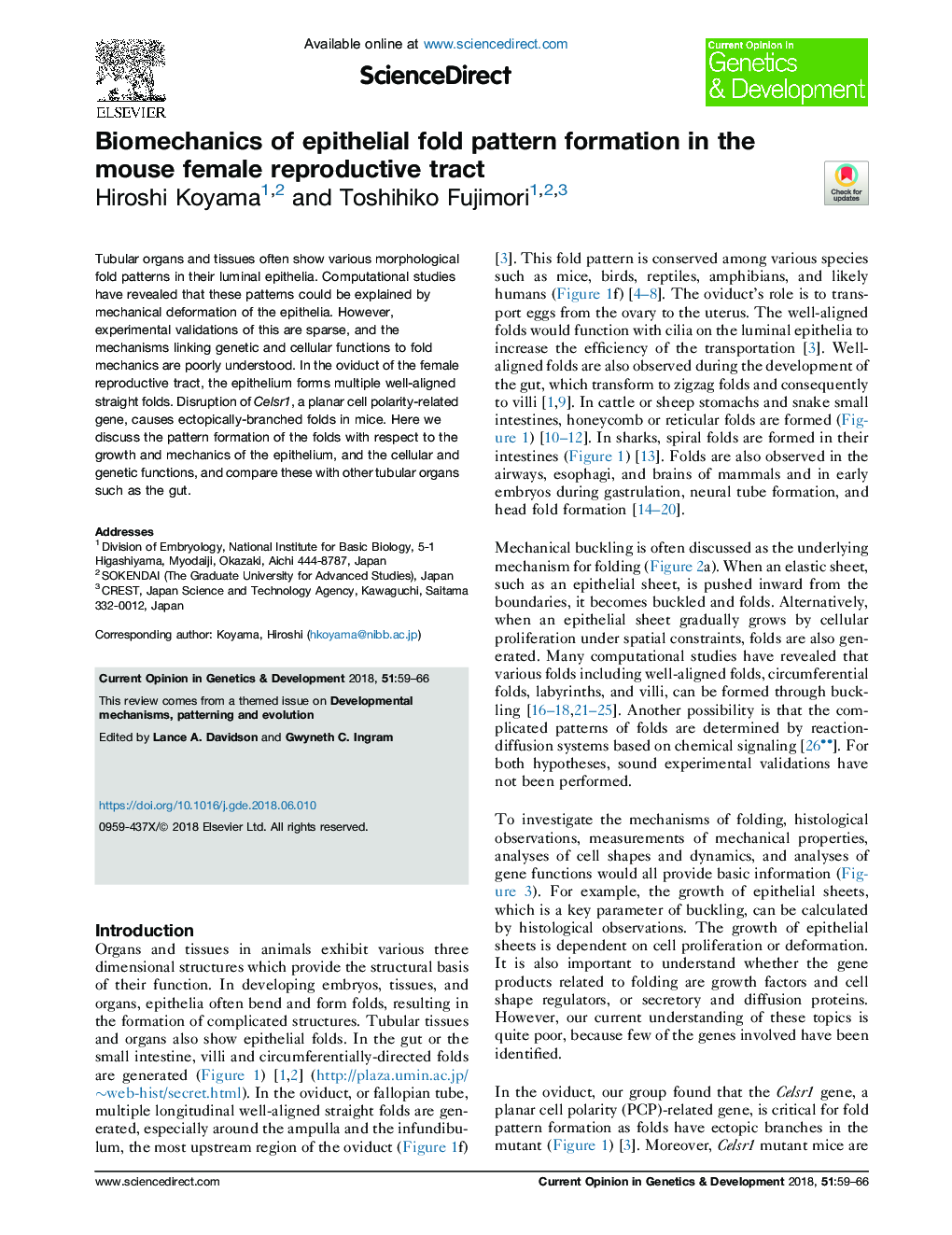| Article ID | Journal | Published Year | Pages | File Type |
|---|---|---|---|---|
| 9955242 | Current Opinion in Genetics & Development | 2018 | 8 Pages |
Abstract
Tubular organs and tissues often show various morphological fold patterns in their luminal epithelia. Computational studies have revealed that these patterns could be explained by mechanical deformation of the epithelia. However, experimental validations of this are sparse, and the mechanisms linking genetic and cellular functions to fold mechanics are poorly understood. In the oviduct of the female reproductive tract, the epithelium forms multiple well-aligned straight folds. Disruption of Celsr1, a planar cell polarity-related gene, causes ectopically-branched folds in mice. Here we discuss the pattern formation of the folds with respect to the growth and mechanics of the epithelium, and the cellular and genetic functions, and compare these with other tubular organs such as the gut.
Related Topics
Life Sciences
Biochemistry, Genetics and Molecular Biology
Developmental Biology
Authors
Hiroshi Koyama, Toshihiko Fujimori,
